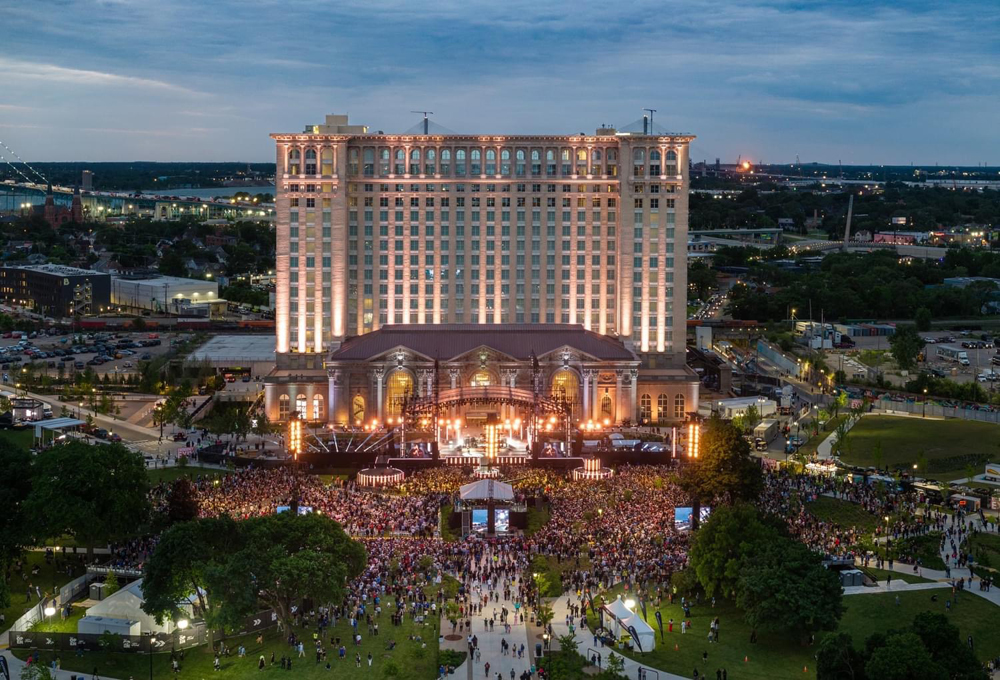
DETROIT — The city of Detroit has seen its share of comebacks over the past 20 years, but nothing quite like what is happening this week as it celebrates the grand opening of the renovated Michigan Central Station, the beneficiary of hundreds of millions of dollars in investment by its new owner, Ford Motor Co.
The massive edifice, built in 1913 by the Michigan Central Railroad and a potent symbol of that company’s wealth and power, is now the cornerstone of what Ford is calling its innovation center: headquarters of the company’s Ford Model e and Ford Integration Services teams, as well as other initiatives focused on transportation’s future. A crowd of tens of thousands began scheduled free tours Friday morning; tours will continue at least through June 16. They will resume this fall when commercial activity at the facility begins.
The open house was preceded on Thursday night by a gala concert in front of the station, co-produced by the hip-hop icon Eminem and featuring the Detroit Symphony Orchestra, Diana Ross, Jack White, the rapper Common, Melissa Etheridge, and a host of other pop music stars associated with the city. Free tickets for the massive concert were gobbled up within 15 minutes, and on Thursday night 15,000 music fans were treated to the sight of their hometown stars performing in front of the Beaux Arts façade of a 111-year-old train station.
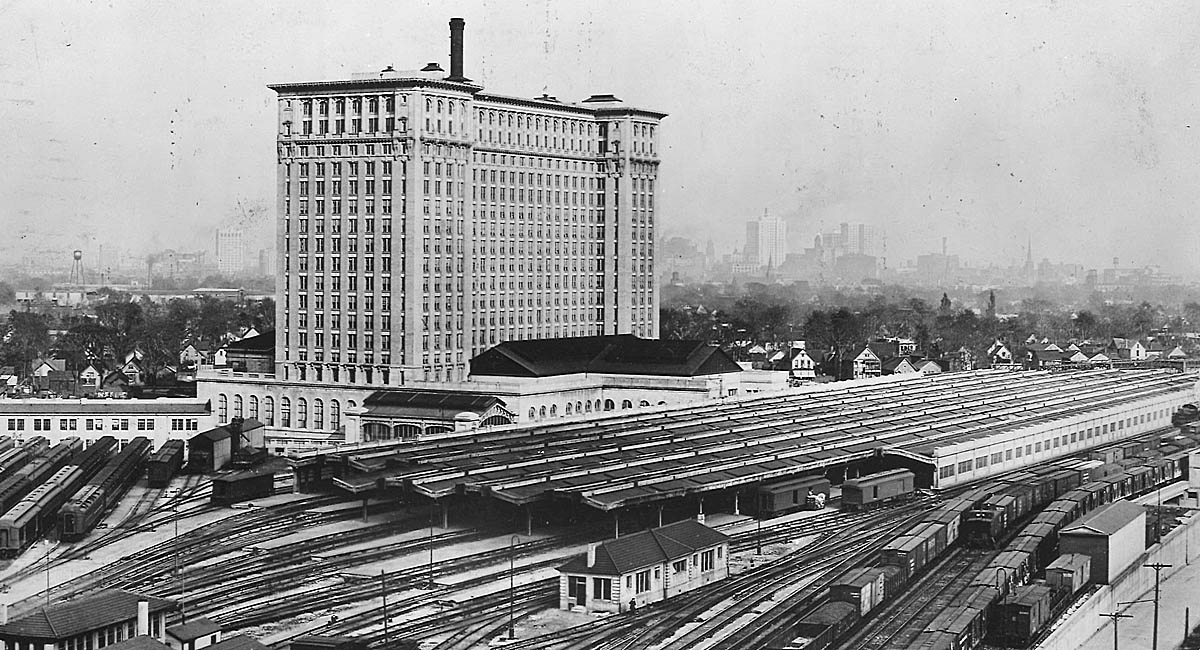
The station’s opening also brings fresh momentum to the re-emergence of Corktown, the working-class, originally Irish community surrounding the depot southwest of downtown Detroit along Michigan Avenue. Another motor city landmark, Tiger Stadium, torn down in 2009, also shared the neighborhood.
Michigan Central’s new role on the cutting edge of automotive and transportation technology is the vision of Bill (William Clay) Ford Jr., executive chair of the company that bears his name. His love of Detroit and his ties to its history — he is the great-grandson of both Henry Ford I and Harvey S. Firestone — makes the station’s revival a personal quest.
“Michigan Central means a great deal to us all,” said Ford in a statement released by the company. “In many ways, this building tells the story of our city. This station was our Ellis Island, a place where dreamers in search of new jobs and new opportunities first set foot in Detroit. But once the last train pulled out, it became a place where hope left. In 2018, I decided it was time to change that by reimagining this station as a place of possibility again.”
That “last train” pulled out in January 1988, when Amtrak moved to smaller facilities in Detroit and terminated all its Detroit-Chicago Wolverine service trains at Pontiac, northwest of Detroit. A succession of unsuccessful revival plans led to the sale of Michigan Central in 1995 to the late Manuel Moroun, the mercurial trucking magnate whose company, CenTra Inc., owns the nearby Ambassador Bridge to Canada.
Ford bought the station from Moroun in 2018 after a succession of several other unsuccessful revival efforts. What Ford inherited was a veritable ruin of a building, marked by broken stone and plaster, pilfered architectural details, a bonanza of graffiti, acres of broken glass, and the detritus of several years of neglect [see “New life for Detroit’s Michigan Central Station,” Trains News Wire, June 11, 2018]. In a city unfortunately saddled with its status as a destination for “ruin porn,” Michigan Central was exhibit A.
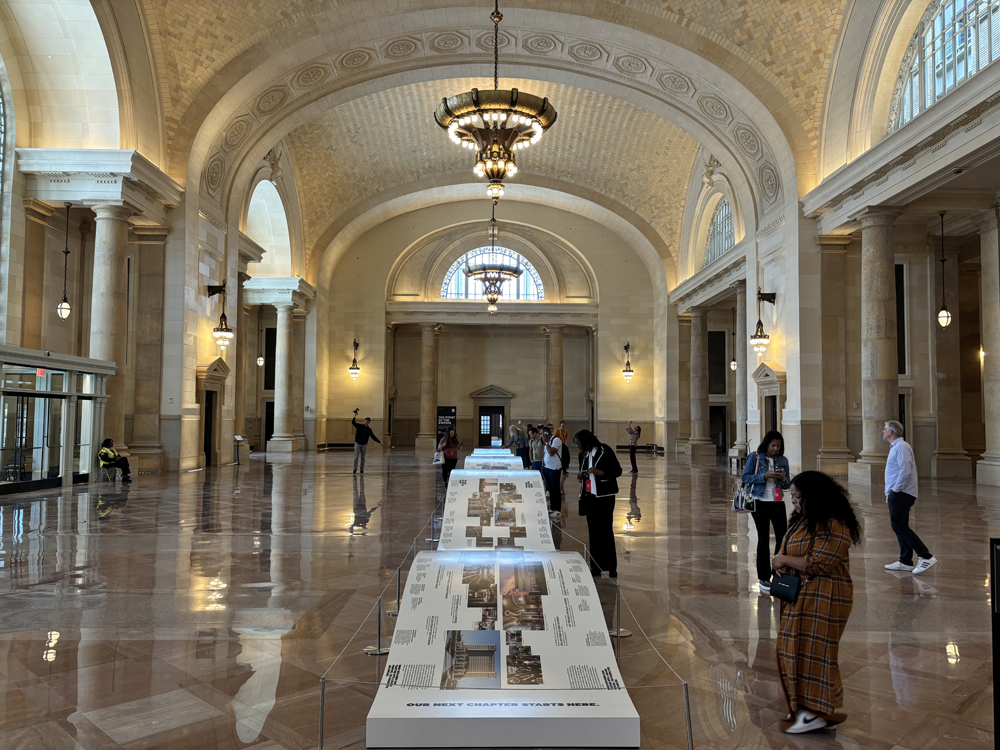
How things have changed. Visitors on Friday were treated to a stunning example of what can be accomplished with historical vision, ample financing, and advanced construction and restoration technology. The gleaming interior reflected meticulous restoration, from the waiting room’s vaulted 54-foot Guastavino tile ceiling to several massive chandeliers to sparkling new glass in the hundreds of MC Station’s windows, especially noticeable in the skylit south concourse.
In renovating Michigan Central, Ford enlisted an army of consultants, designers, community leaders, and more than 3,000 skilled tradespeople, transforming the neglected building and its grounds into a beautiful version of its former 1913 self. It’s hard to imagine another major American railroad terminal that had fallen as far into disrepair as Michigan Central, only to come back better than ever.
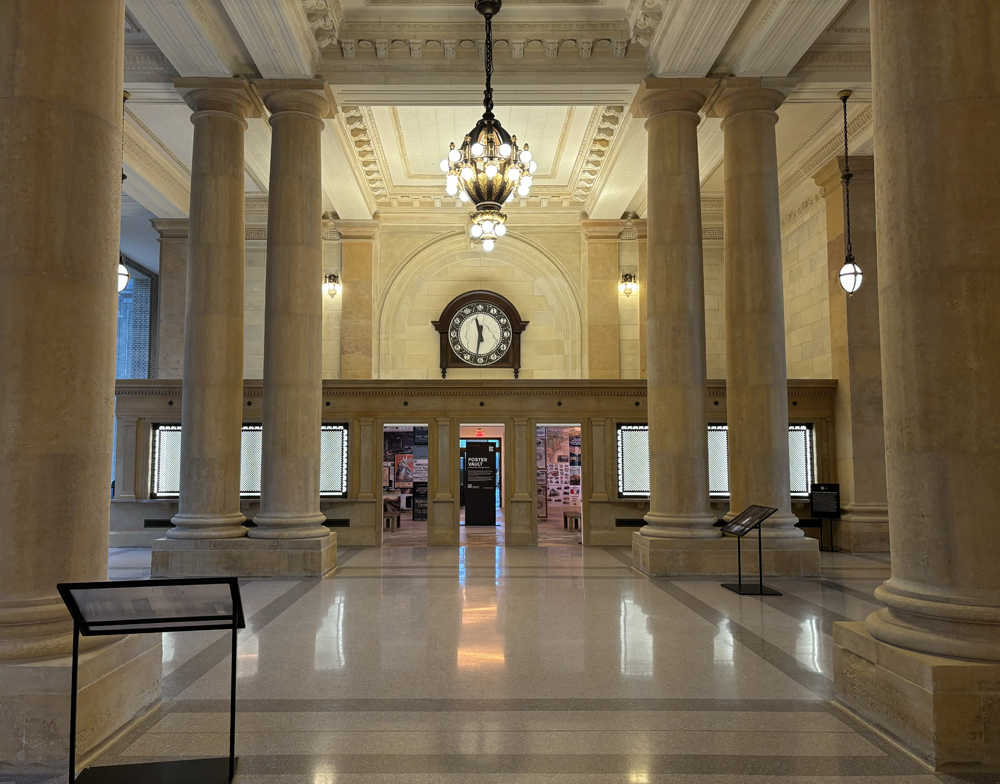
To replace broken and vandalized surfaces, Ford reopened a southern Indiana quarry, the same one MCRR used in 1913, to provide hundreds of tons of limestone. In other parts of the station, artistic details such as doorway friezes and ornamental cartouches were re-created by teams of artisans. Some items were replicated from original samples people had “liberated” from the building during its lost years and brought back to help with the effort.
Michigan Central originally was designed by two firms whose reputations in the early 20th century were unassailable: Reed & Stem, famous for NYC’s Grand Central Terminal, and Warren & Wetmore, known for its luxury hotels as well as the New York Central Building (now the Helmsley Building) on Park Avenue. That partnership is reflected in the unusual dual appearance of the building, with its flamboyant Beaux Arts main floor — the actual train station, with its huge waiting room and spacious concourse — backed up by a much more sedate 17-story office tower. When it opened, it was called the tallest railway station in the world.
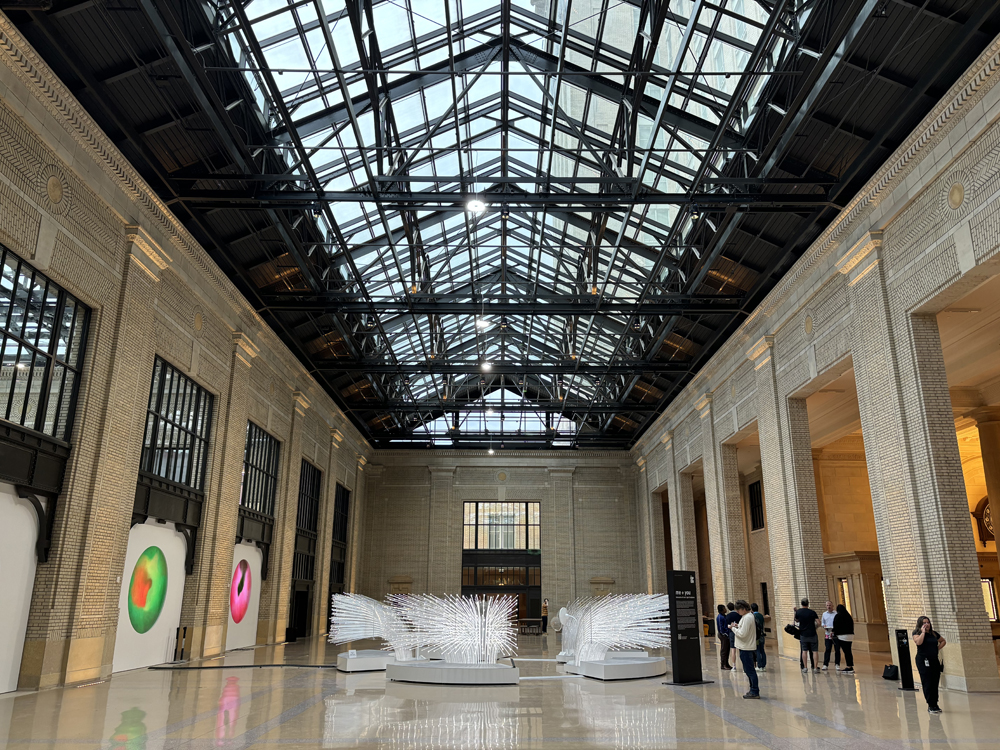
The station also told the world of the importance of the Michigan Central Railroad. Driven largely by 19th-century Boston and New York investors, the MCRR consolidated in the 1860s and ’70s to become one of the most powerful railroads in the nation, and Detroit was its headquarters. It later came into the orbit of the Vanderbilt interests and the New York Central, which began leasing the MCRR in 1930. Decades later, even in the early Amtrak era, passenger crews often sported “MCRR” lapel pins.
The station’s heyday was around 1929, when more than 90 arrivals and departures used the station’s 18-track Bush-style trainshed. Some of those trains were blue chip: the New York–Chicago Wolverine, the Detroit–Chicago and Detroit-Cleveland Mercury, and the nightly Twilight Limited, which through the 1930s boasted an extra-fare, parlor-car-only consist. Lucius Beebe said the train “was perfumed with folded money.”
For the moment, Michigan Central (as the Ford entity controlling the station is called) has no plans to return passenger service to the station, although the possibility remains, depending on conversations between Ford, Amtrak, the state of Michigan, and the city of Detroit. News Wire will offer further reporting on this by Trains correspondent Bob Johnston.
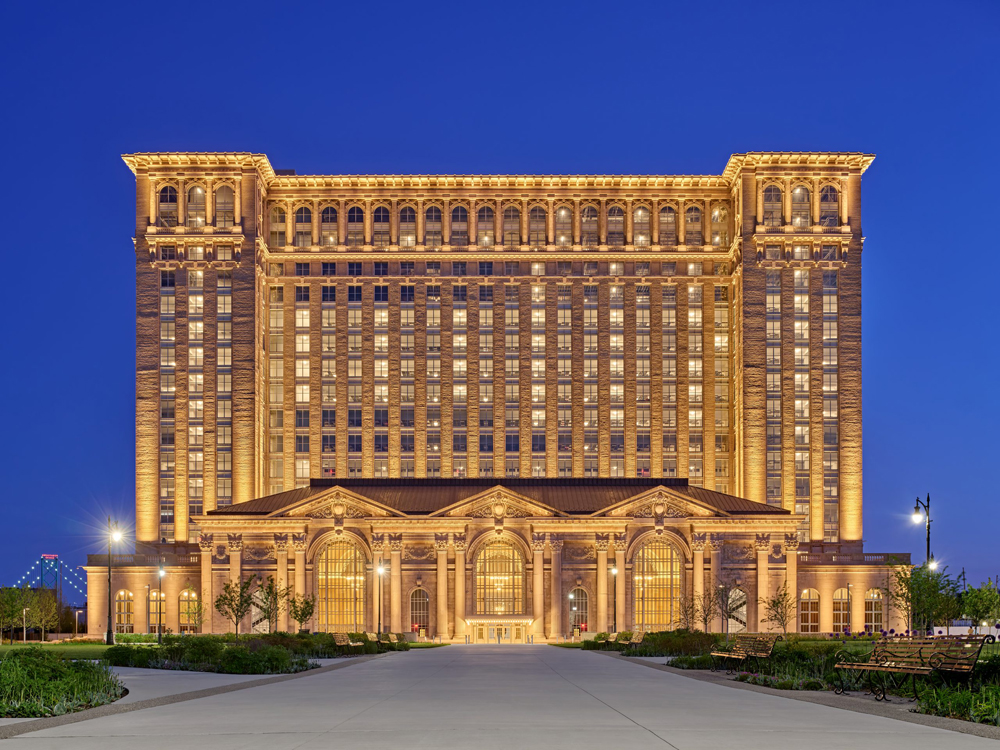






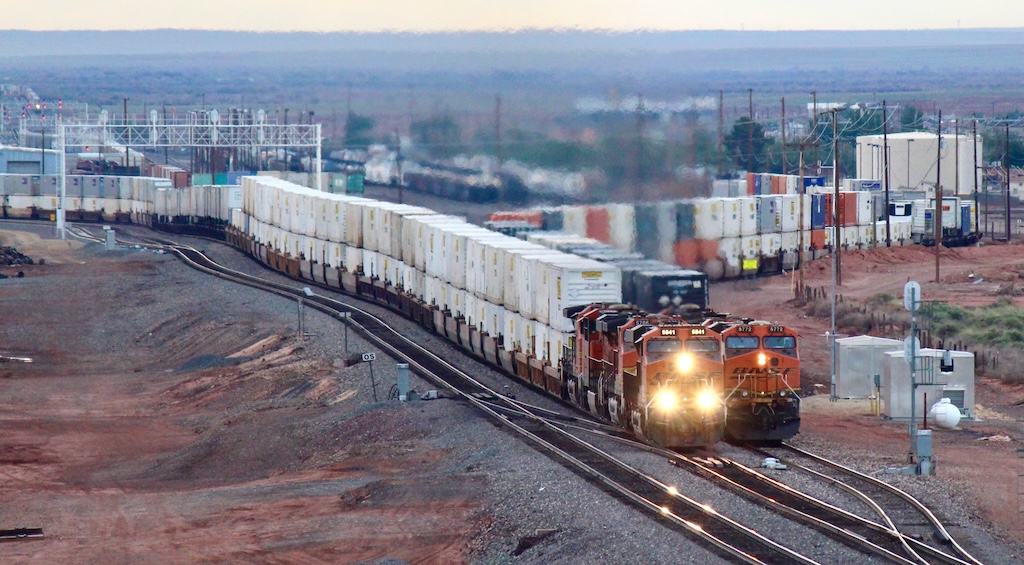
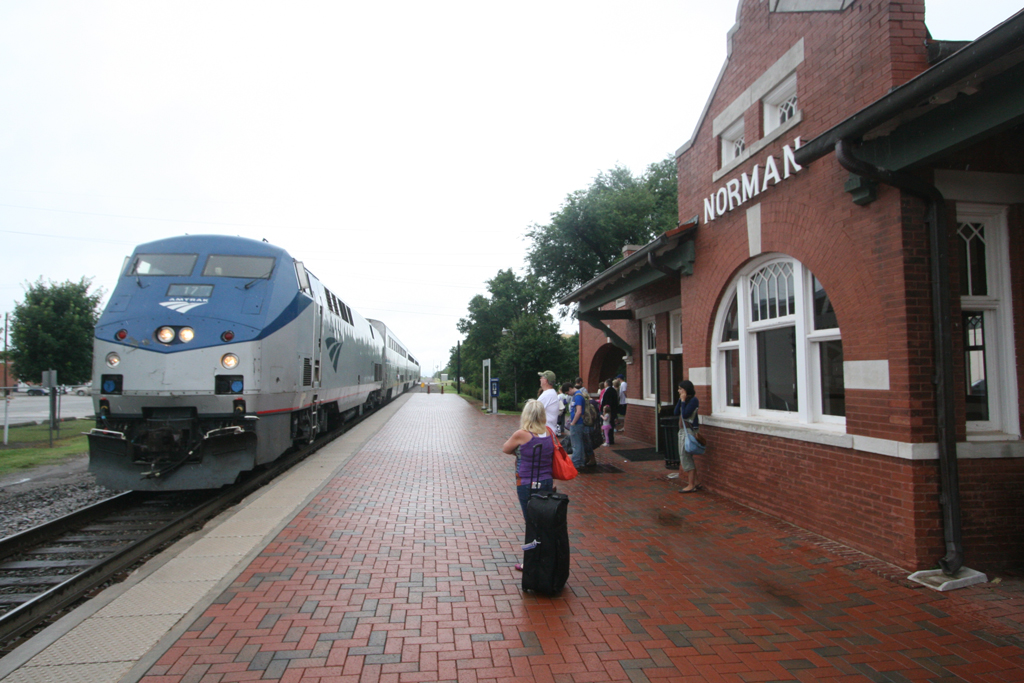
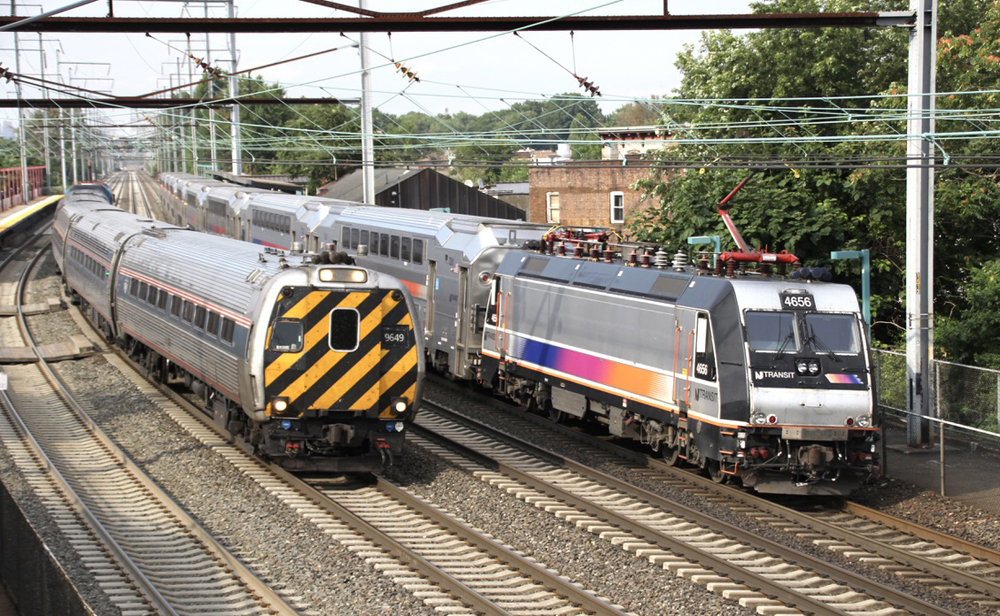





Have to wonder if past dirty exteriors and interiors looks came from too many steam engines?? Have tp agree that the PNT leg needs to be just a simple connection to Michigan Central.
ALAN
Right now, Metro Detroit Amtrak stations are in very amenable locations. Dearborn and Ann Arbor to the west, Detroit New Center in the middle, Royal Oak and Troy/ Birmingham to the north. New Center, currently the only station in Detroit, is ideally located but lacks the je ne sais quoi of Michigan Central, and isn’t on the way to Canada. (I’ve left Pontiac depot off this list because I’ve never seen it and don’t really know where it is, other than to say it’s in a highly populated area — Waterford Township, Rochester, Rochester Hills, Auburn Hills etc. nearby.)
Most (or all?) Amtrak trains in the Midwest corridors have cabs at both ends. So backup moves in and out of Michigan Central wouldn’t be a problem. Increase of track speed between Michigan Central and New Center would surely help.
I never thought this one would come back from the grave.
Judging from the photos this is MORE THAN a restoration. The building never looked anywhere near that good when it was a railroad station. I always thought of it as rather ugly when I lived nearby (Hubbard Farms neighborhood, west of Corktown), or when I rode Amtrak.
It’s a great project in a great city. But I can never understand why FoMoCo made this massive investment or what’s in it for that corporation. Simply put, if Ford needed office/ tech space, it could have been obtained elsewhere for a fraction the cost.
Charles I believe Mr. Ford had a dream and a vision and had the resources to make it happen.
Beautiful restoration job so far would love to see what it looks like when the entire project is completed. Now if only the Buffalo Terminal could find a similar benefactor.
An absolutely beautiful station and restoration. Great job Ford for making an effort to restore as close as possible to the original, even reopening original limestone quarry in Indiana.
Stunning restoration!
Meanwhile Buffalo’s Central Terminal remains an empty degraded shell…
Good news, it looks beautiful!
Besides this grand renaissance of a magnificent structure thanks to some unselfish wealth and craftsmen being so welcome news for the city, the last portion of the last paragraph lends hope for the future:
“For the moment, Michigan Central (as the Ford entity controlling the station is called) has no plans to return passenger service to the station, although the possibility remains, depending on conversations between Ford, Amtrak, the state of Michigan, and the city of Detroit. News Wire will offer further reporting on this by Trains correspondent Bob Johnston.”
Looks wonderful, nice to see the building saved.